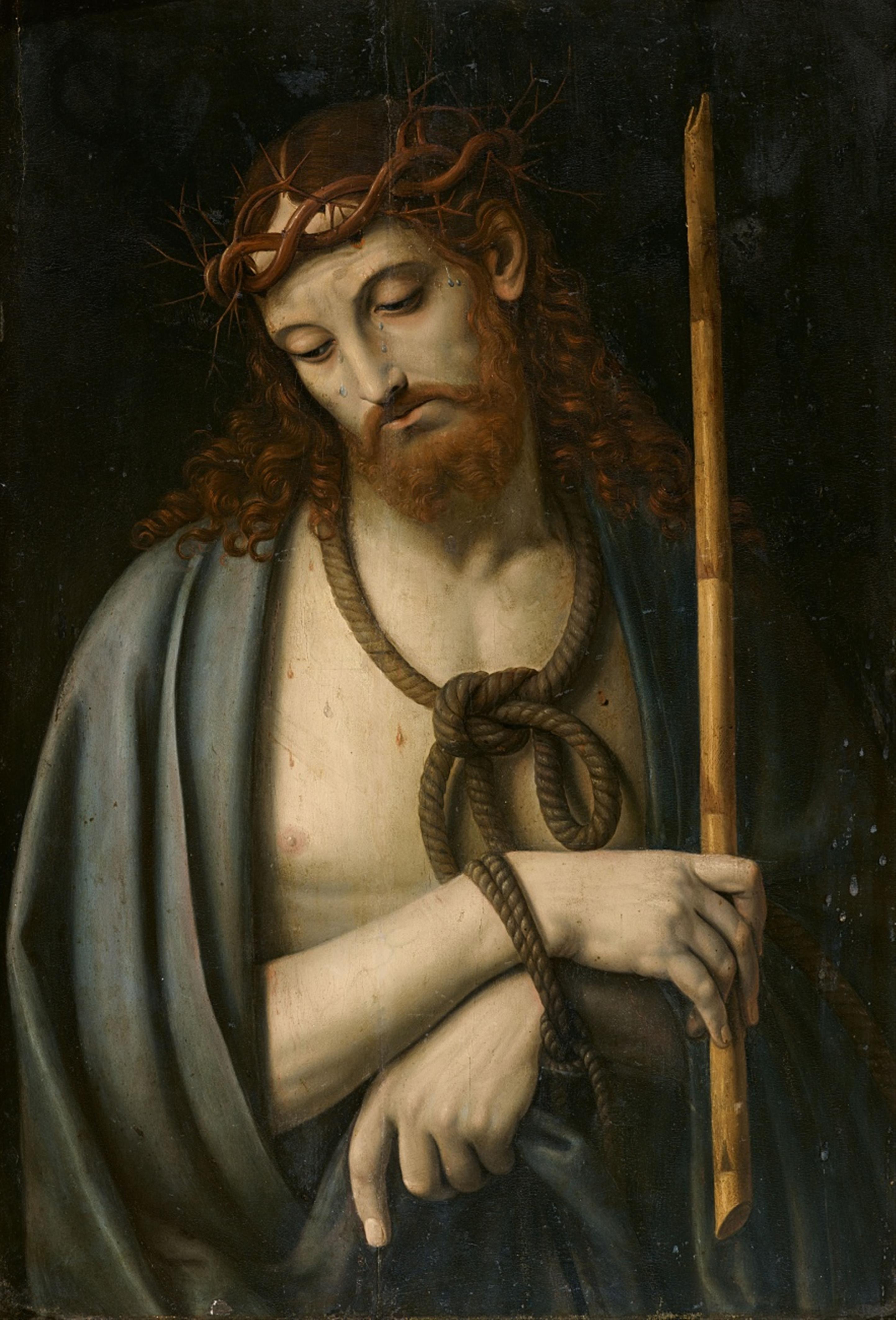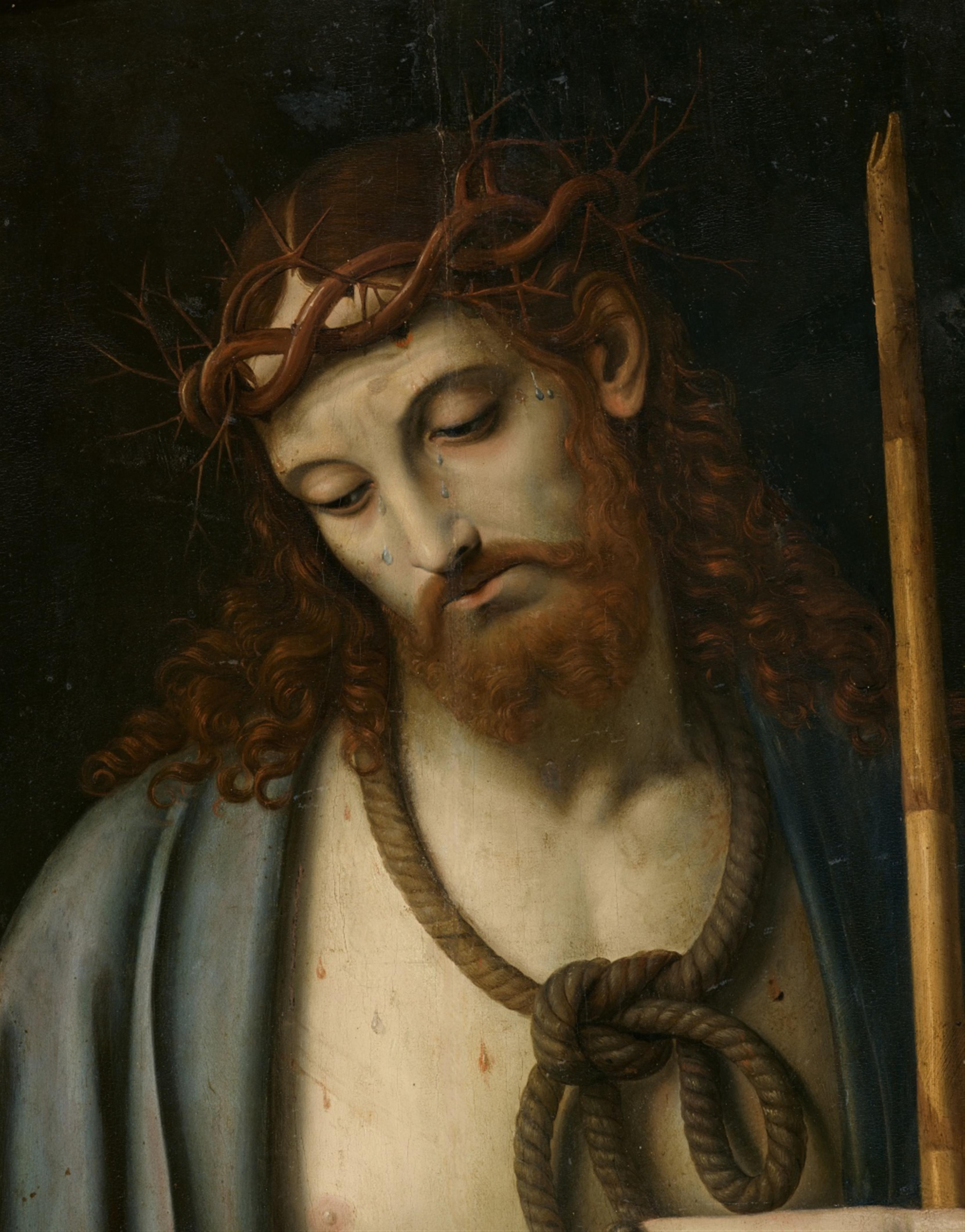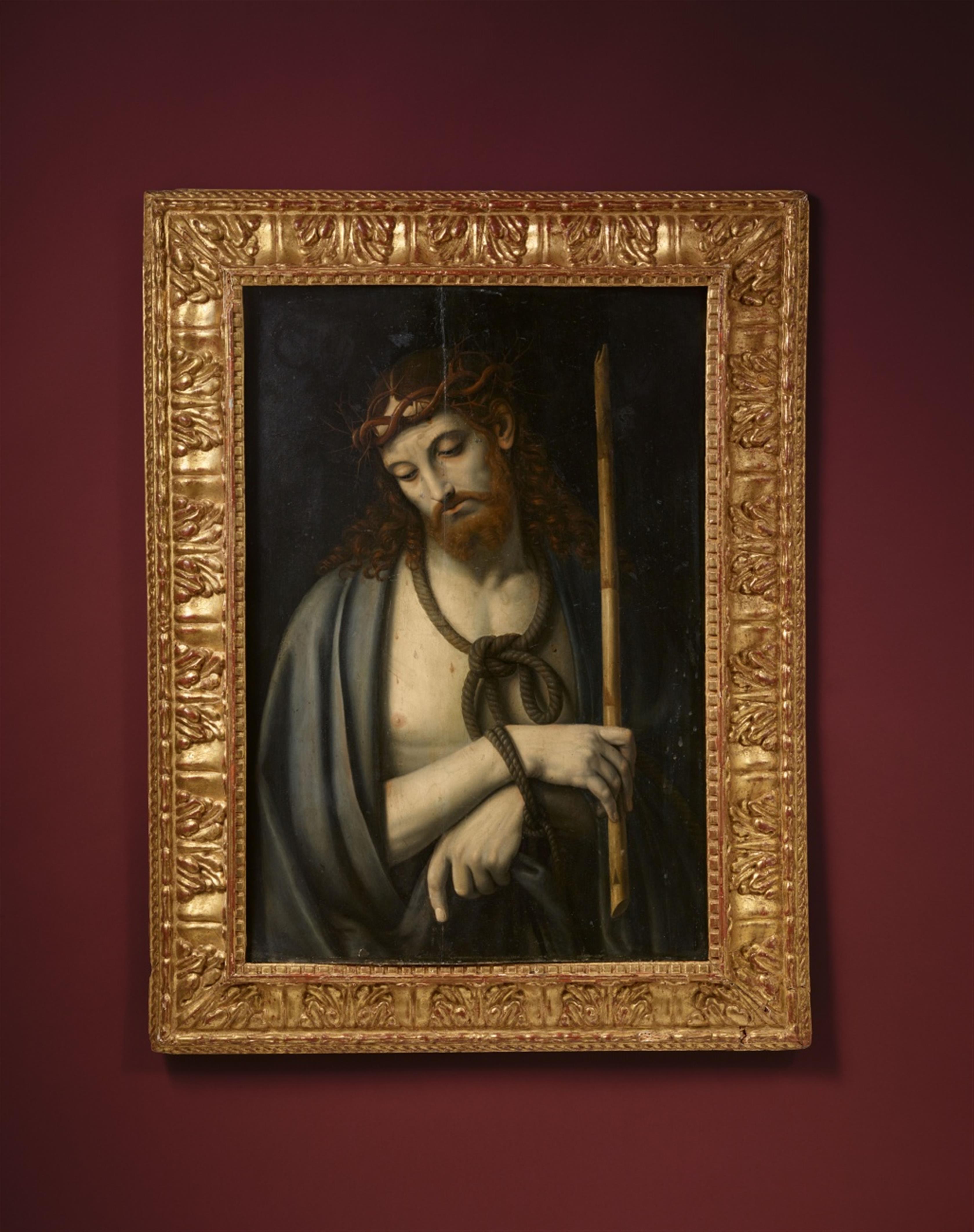Andrea Solario
Ecce Homo
Oil on panel. 66.5 x 47 cm.
Andrea Solario came from a family of artists based in Milan. In 1489 he first became a pupil of Giovanni Bellini in Venice and from the mid-1490s, back in Milan, worked in Leonardo da Vinci's workshop. He became one of his most important successors, and like the latter he travelled to France, where he stayed from 1507 to 1509. Andrea Solario died in Milan in 1524 at the age of 64. His works are characterised by a sculptural approach and intense colour palette. In the course of his development, the technique of "sfumato" and Leonardo's type of figures emerge more and more clearly. Like many other Italian masters, Andrea was also inspired by Flemish art. This is particularly noticeable in this composition, whose pictorial idea has its origins in Flemish devotional paintings of the 15th and 16th centuries.
No composition by Andrea Solario has had a greater impact than his representations of the Ecce Homo. The devotional painting from the Passion of Christ shows the humiliated Saviour with the crown of thorns, bound hands and a hollow bamboo stick as a sceptre against a dark background. His head is tilted to the left, auburn curls fall over his shoulders and the blue cloak, drops of blood and tears flow down his face and his bare chest. In addition to two versions in Leipzig (Museum der bildenden Künste, Inv. No. 1660) and (Philadelphia Museum of Art, John G. Johnson Collection) that are considered original and by his own hand, David Alan Brown lists a total of 13 other versions of this composition, including the present work under the letter "k". Brown only knew the painting from an old black and white photograph, but refers to a certificate by Mina Gregori for the attribution.
The context in which Andrea Solario created his famous "Ecce Homo" has not yet been clarified. Most scholars assume that the painting was executed during Solario's stay in France between 1507 and 1509. This is supported by the oak panel on which it was painted. The Leipzig painting, however, was transferred to canvas in the 19th century and it is not known whether this panel was painted on oak or poplar wood. It has since been established on both versions in Leipzig and Philadelphia that the signatures are not authentic. The present picture is also obviously painted on oak. With a very fine brush, the painter executes the facial features of Christ and models the eyes, the transparent tears, the reddish hair falling in curls and the beard with the most delicate tones. The painting has not been restored recently, but it is in a good overall state of preservation.
Provenance
Private collection, Rhineland. - Lempertz, Cologne, 12.-14.6.1980, lot 240. – German private collction.
Literature
David Alan Brown: Andrea Solario, Milan 1987, p. 212-213.






